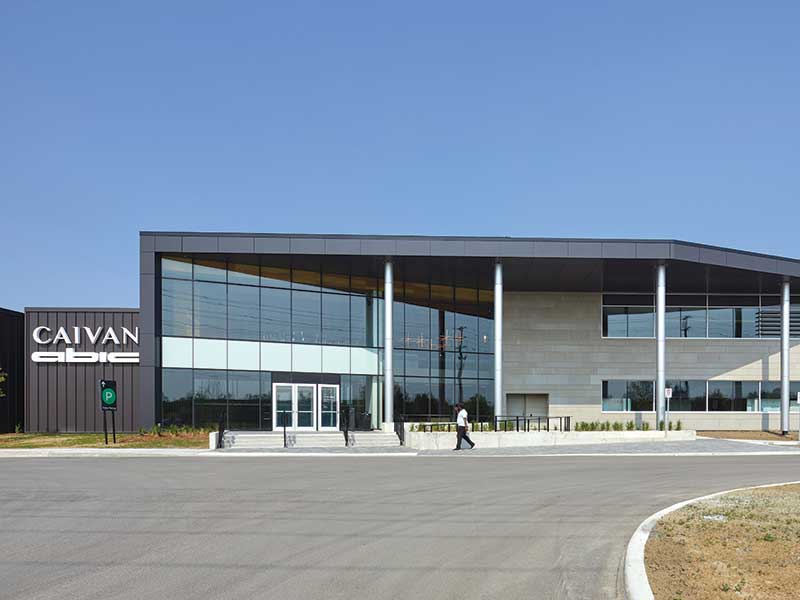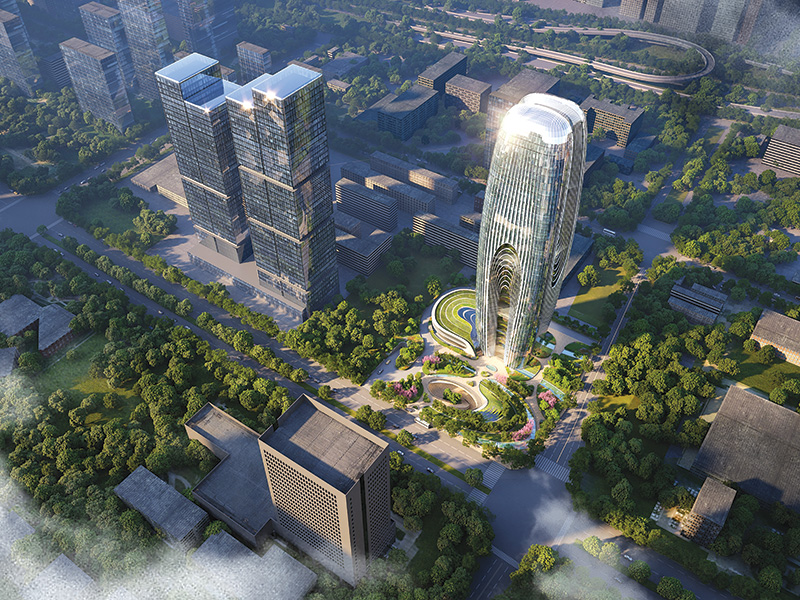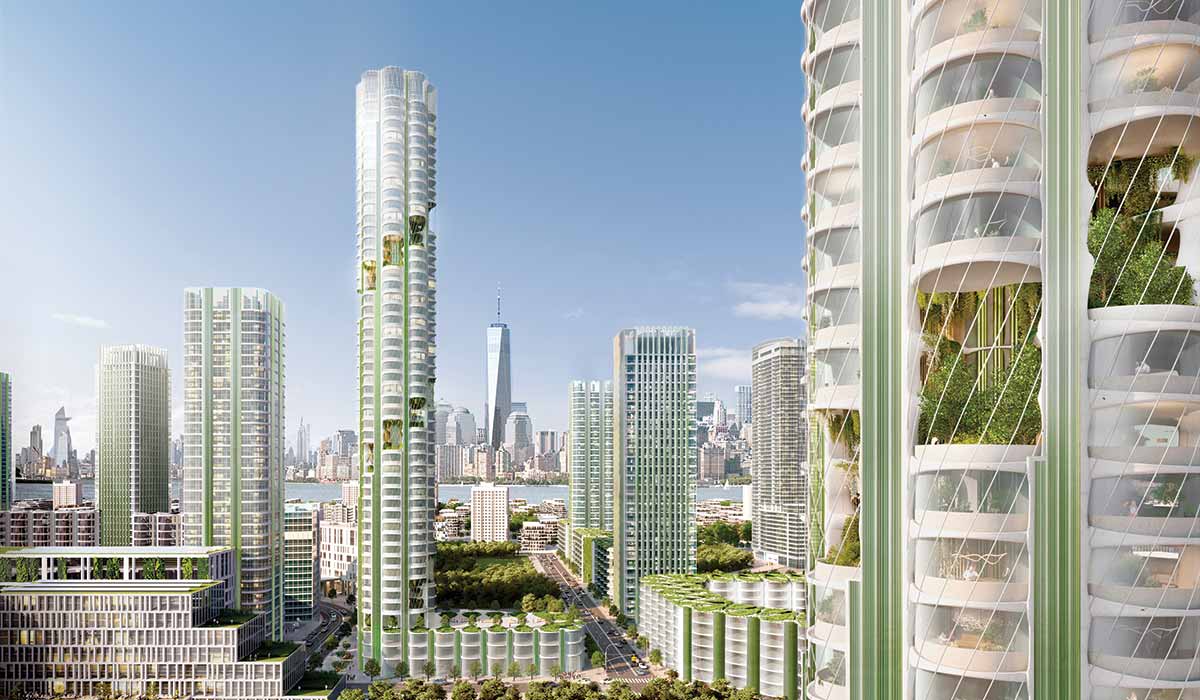
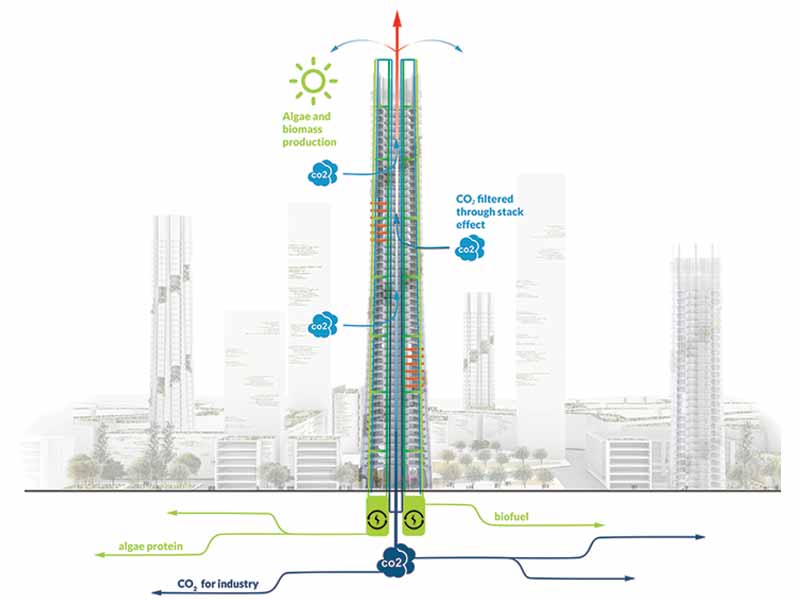
SOM has developed the first step toward achieving this goal on a broad scale, with a prototype for a high-rise building. The central proposition of Urban Sequoia is that the built environment can absorb carbon. SOM’s proposal transforms buildings into solutions – radically rethinking how buildings and cities are designed and constructed. It is a viable solution that could have a far-reaching impact, with the potential to create a circular economy that absorbs carbon.
The need to transform the built environment is clear. The building sector generates nearly 40% of all global carbon emissions. As urban populations continue to grow, studies have predicted that another 230 billion square metres of new building stock will be needed by 2060.
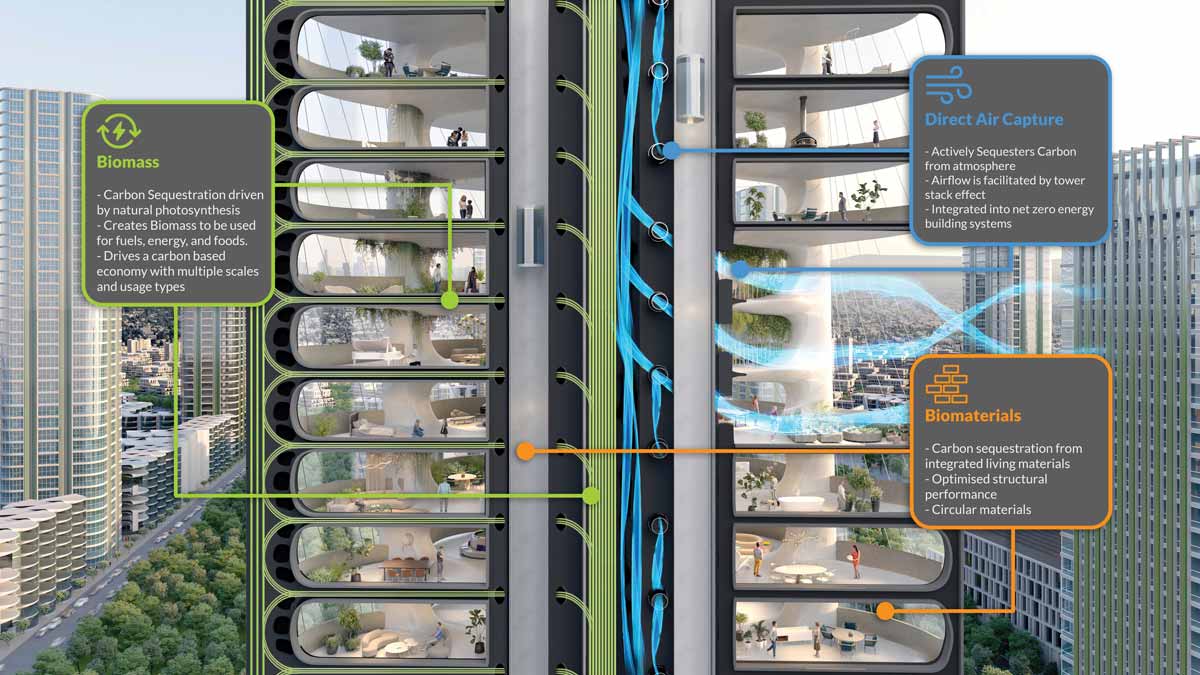
Urban Sequoia brings together different strands of sustainable design thinking, the latest innovations, and emerging technologies and reimagines them at building scale. By holistically optimising building design, minimising materials, integrating biomaterials, advanced biomass, and carbon capture technologies, the project achieves substantially more significant carbon reductions than has been achieved by applying these techniques separately.
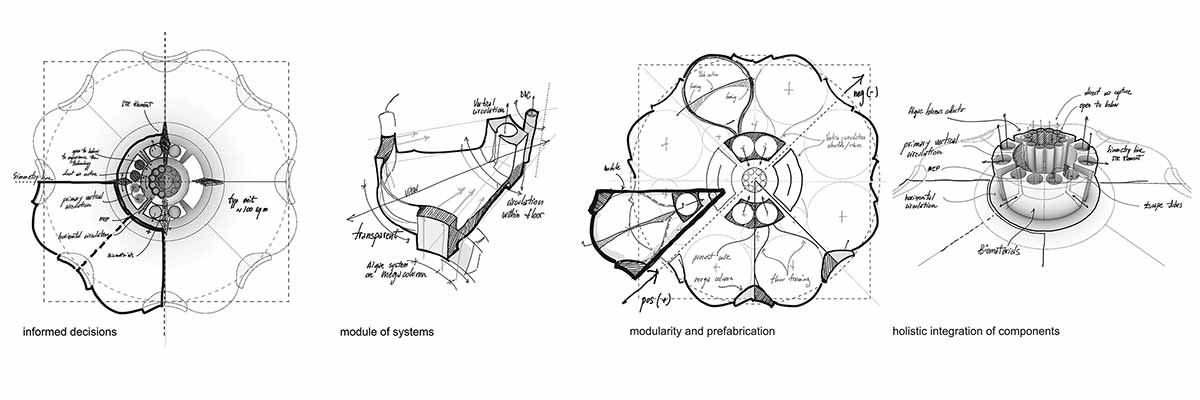
These strategies can be applied to buildings of all sizes and types. For cities, SOM’s prototype design is a high-rise building that can sequester as much as 1,000 tons of carbon per year, equivalent to 48,500 trees. The design incorporates nature-based solutions and materials that use far less carbon than conventional options and absorb carbon over time. Materials like bio-brick, hempcrete, timber, and biocrete reduce the carbon impact of construction by 50% compared to concrete and steel. A progressive approach could reduce construction emissions by 95%.
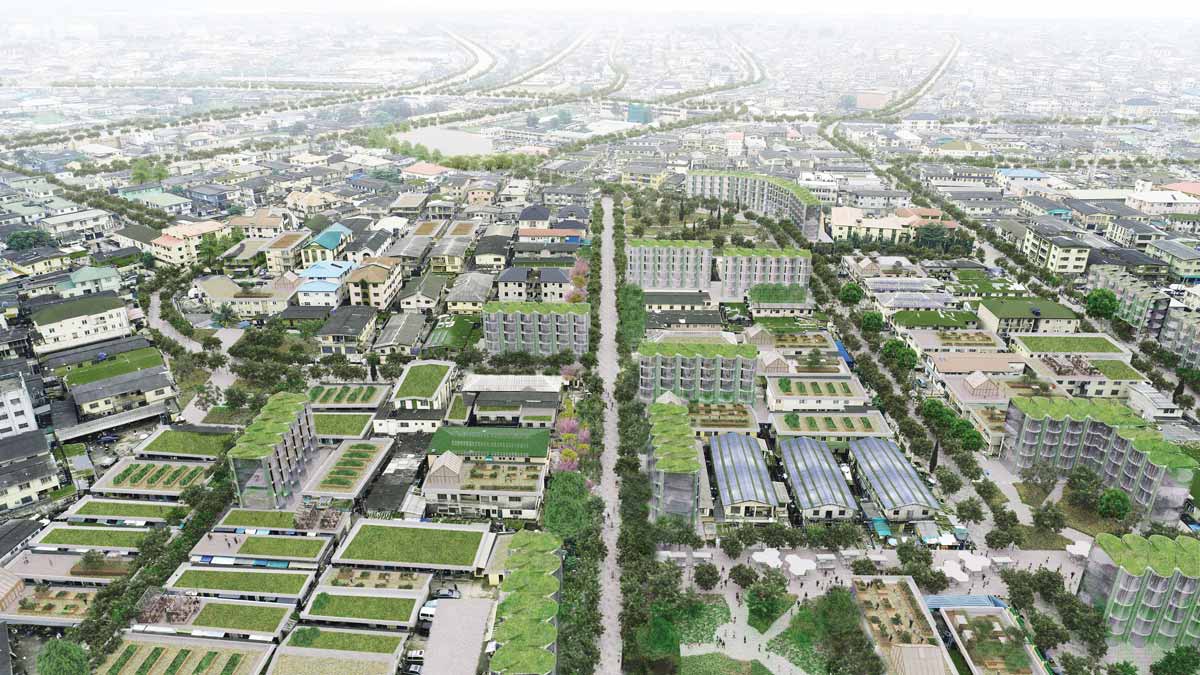
This solution allows us to move beyond net zero to deliver carbon-absorbing buildings, increasing the amount of carbon removed from the atmosphere over time. After 60 years, the prototype would absorb up to 400% more carbon than it could have emitted during construction. The captured carbon can be put to use in various industrial applications, completing the carbon cycle and forming the basis of a new carbon-removal economy. With integrated biomass and algae, the facades could turn the building into a biofuel source that powers heating systems, cars, and aeroplanes; and a bioprotein source usable in many industries.
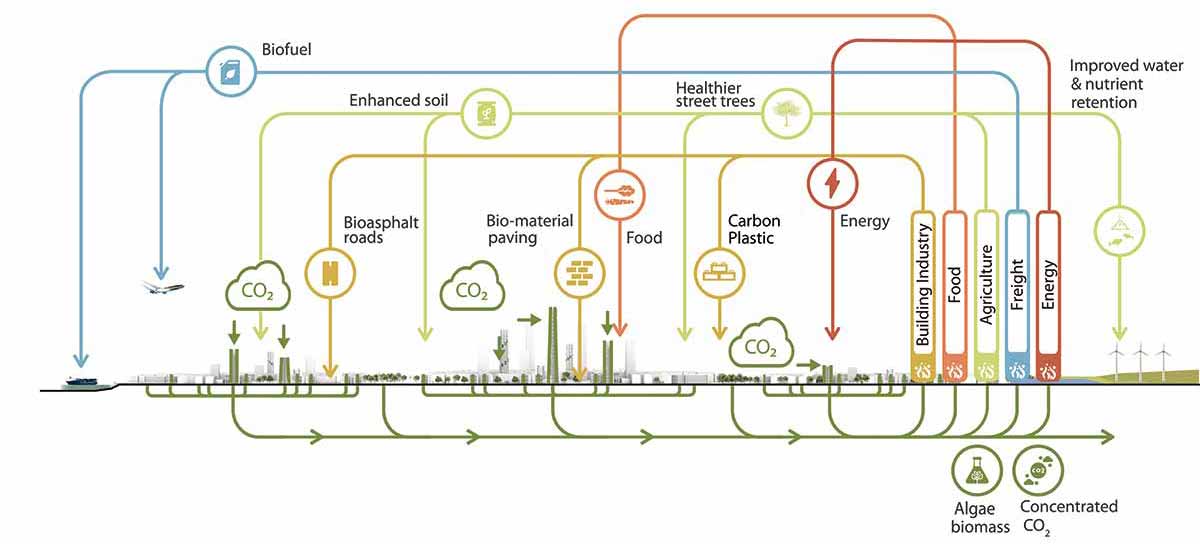
On an even broader scale, the by-products of building an Urban Sequoia will help revolutionise the way we design and maintain infrastructure. Captured carbon and biomass can be used to produce biomaterials for roads, pavement, and pipes. By converting urban hardscapes into gardens, designing intense carbon-absorbing landscapes, and retrofitting streets with additional carbon-capturing technology, former grey infrastructure can sequester up to 120 tons of carbon per square kilometre. When replicating these strategies in parks and other greenspaces, we can save up to 300 tons per square kilometre of carbon annually.
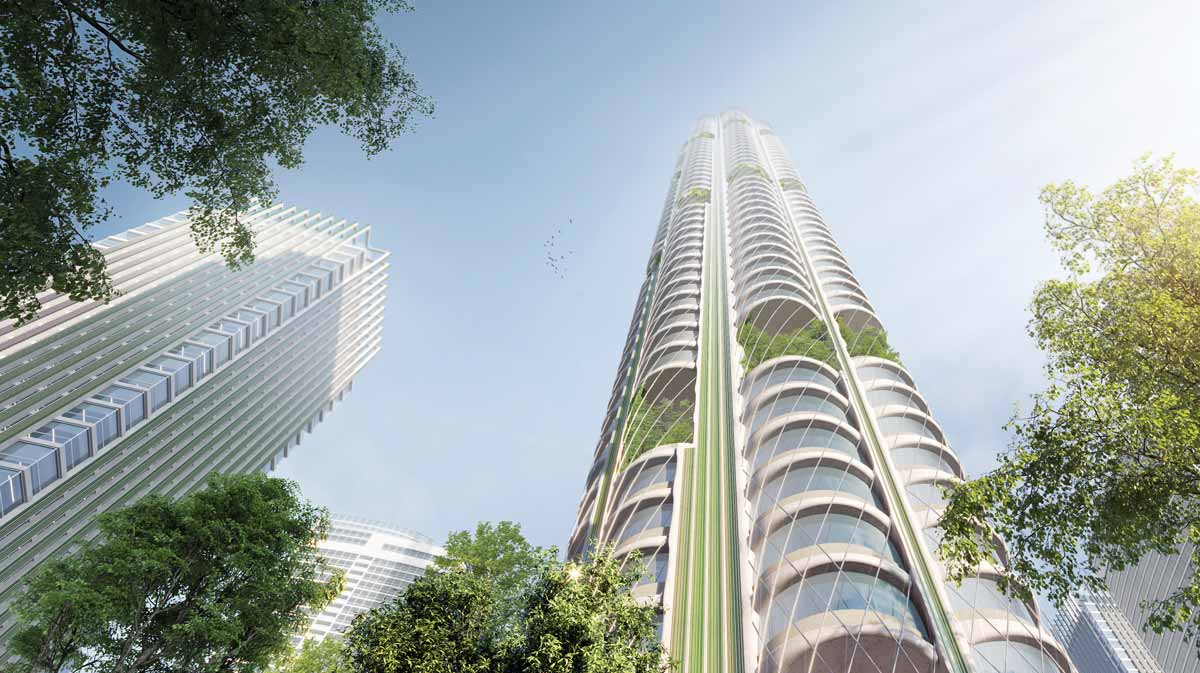
And if every city around the world built Urban Sequoias, the built environment could remove up to 1.6 billion tons of carbon from the atmosphere every year.
